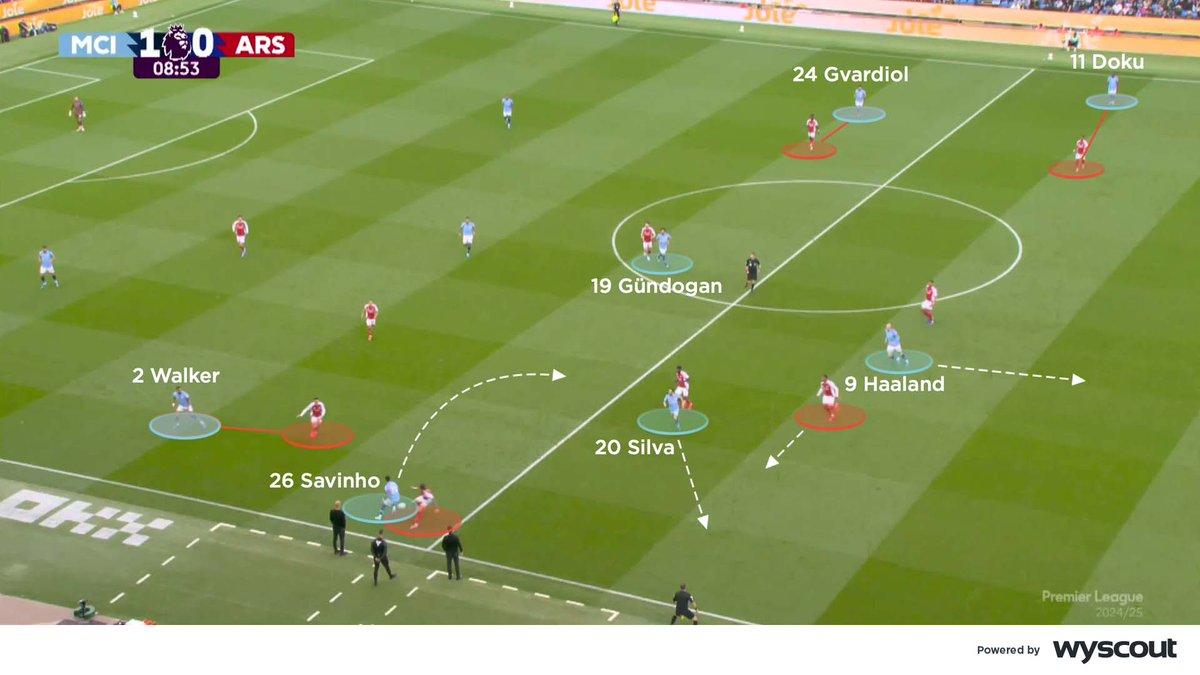Fresh analysis thread 🙌
How Manchester City’s wide triangles and box midfield helped them dominate against a disappointing Manchester United... 🧐🧵
🔋@Wyscout
#MCFC • #ManchesterDerby
How Manchester City’s wide triangles and box midfield helped them dominate against a disappointing Manchester United... 🧐🧵
🔋@Wyscout
#MCFC • #ManchesterDerby
Guardiola set his team up in their familiar 4-3-3, against United’s 4-4-2 block. City focused on building through the inside channels. De Bruyne and Silva received in between the United winger and central midfielder, before connecting with the wide attacker and full-back... 🧐🧵 

Walker held his position at right-back, acting as cover against any United counter-attacks, while Cancelo combined with Silva and Grealish on the left. Foden’s supporting movements to that side led to multiple quick combinations that broke through United’s deeper block... 🧐🧵 

United tried to cover the inside channels in the second half. This meant Silva was more effectively screened, but Cancelo had more licence to push forward. It also gave Grealish the chance to drift inside in which he could receive and connect with the front line... 🧐🧵 

To play through the first two defensive lines, City often looked to form a box in midfield. Grealish continued to move inside, Silva dropped to support Rodri in what looked much like a double pivot, while De Bruyne moved across to complete the midfield quartet... 🧐🧵 

Rangnick set up in a 4-4-2 with Pogba and Fernandes acting as the forward pairing, supported by Sancho and Elanga. The wingers looked to pin the City full-backs, which gave Pogba and Fernandes the chance to drift into the inside channels and connect with the back line... 🧐🧵 

Fernandes and Pogba acted as a number 9 and 10 pairing, with one dropping short into the inside channels, and the other running beyond to stretch the City back line. In the first half these movements helped United break through the hosts’ block via the inside channels... 🧐🧵 

United’s attacking output was restricted to counter-attacks in the second half. Whenever they did manage to regain the ball high, or centrally, they targeted the space in behind City’s high and wide full-backs and often looked for the significantly narrowed far-side winger...🧐🧵 

Manchester City dominated the ball in the second half, but whenever United did enjoy any possession the hosts counter-pressed aggressively and with intent, committing numbers around the ball immediately upon losing it... 🧐🧵 

• • •
Missing some Tweet in this thread? You can try to
force a refresh
















